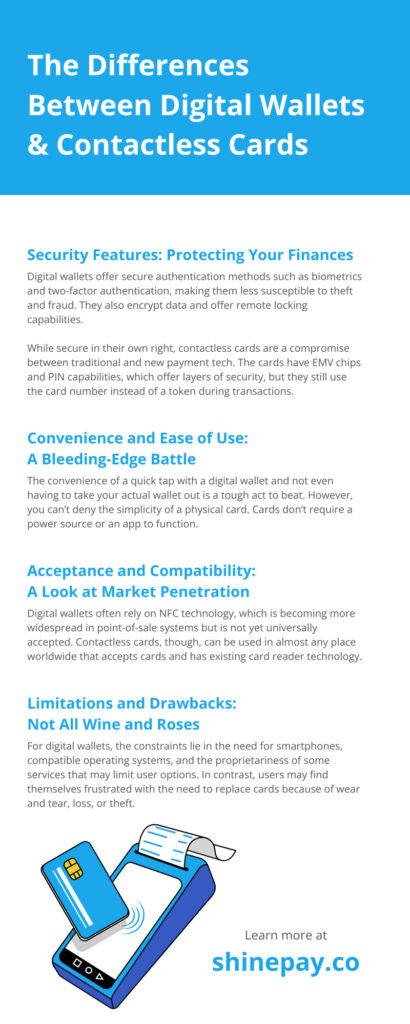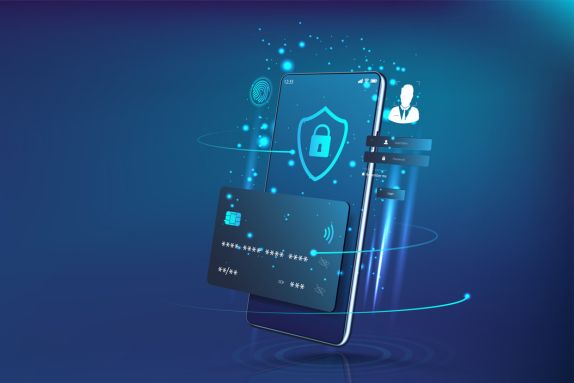In an era where convenience reigns, digital innovations have made their way into the most everyday of activities. One noticeable shift is the transformation of payments from clunky cash and complex credit card systems toward the seamless experiences offered by digital wallets and contactless cards. Many professional business owners seek ways to incorporate payment systems that allow this convenience. Shinepay offers laundry apps for apartmentsto transform your apartment laundry facility. Dive into the details to understand the differences between digital wallets and contactless cards and how they can impact your business experiences. This blog will focus on how contactless payment methods can help your apartment complex’s laundry facilities. It will revolutionize how your residents pay for laundry.
Introduction to Digital Wallets and Contactless Cards
The virtual and the tangible collide when we discuss digital wallets and contactless cards.
Digital wallets, sometimes called mobile wallets, refer to electronic versions of the traditional wallet we all know, but with the magical ability to carry endless payment options within a smartphone.
Conversely, contactless cards are physical cards embedded with near-field communication (NFC) technology. When waved near a card reader, they initiate secure transactions without swiping or inserting.
Continue reading to explore the factors that set these two payment technologies apart, helping you discern the right choice for your apartment laundry facilities.
Digital Wallets: More Than Just a Pocket on Your Phone
Let’s take a closer look at digital wallets and how they work.
How They Work
Digital wallets operate on the principle of tokenization, where sensitive information replaces unique digital tokens. This operation ensures a layer of security that actual credit card numbers cannot provide.
Features and Functionality
With a tap, app, or sometimes just the presence of the phone, digital wallets can manage not only credit or debit cards but also loyalty information, ID cards, event tickets, and more. They are a hub for all things “paying and entering.”
Advantages
The convenience of not carrying multiple cards or cash is unparalleled. Additionally, many digital wallets offer rewards and incentives for usage, nudging consumers to go the digital route.
Leaders of the Pack
Apple Pay, Google Pay, and Samsung Pay dominate the digital wallet market. Each offers its set of unique functionalities and is compatible with a wide range of banks and retail outlets.
Contactless Cards: The Tactile Side of Tech Payments
Let’s take a closer look at contactless cards and how they work.
How They Work
Contactless cards do not require swiping or contact with surfaces to activate, as they bridge the physical and digital worlds. They are quickly becoming the default option issued by banks, credit card companies, and chip cards.
Features and Functionality
Contactless technology allows for faster and more efficient transactions, reducing the time spent at the register. They can also handle multiple currency transactions, making them a versatile choice for international use.
Advantages
Contactless cards are a welcome middle-ground for people who aren’t ready to go fully digital. They also offer the same features as chip-enabled cards, such as fraud protection and zero-liability policies.
Examples in the Wild
Brands like Visa, Mastercard, and American Express have been at the forefront of promoting and providing contactless card technology to their customers. Their global reach ensures maximum coverage in most countries.
A Comparative Analysis
Now, it’s time to explore the differences between these two contactless payment options.
Security Features: Protecting Your Finances
Digital wallets offer secure authentication methods such as biometrics and two-factor authentication, making them less susceptible to theft and fraud. They also encrypt data and offer remote locking capabilities.
While secure in their own right, contactless cards are a compromise between traditional and new payment tech. The cards have EMV chips and PIN capabilities, which offer layers of security, but they still use the card number instead of a token during transactions.
Convenience and Ease of Use: A Bleeding-Edge Battle
The convenience of a quick tap with a digital wallet and not even having to take your actual wallet out is a tough act to beat. However, you can’t deny the simplicity of a physical card. Cards don’t require a power source or an app to function.
Acceptance and Compatibility: A Look at Market Penetration
Digital wallets often rely on NFC technology, which is becoming more widespread in point-of-sale systems but is not yet universally accepted. Contactless cards, though, can be used in almost any place worldwide that accepts cards and has existing card reader technology.
Limitations and Drawbacks: Not All Wine and Roses
For digital wallets, the constraints lie in the need for smartphones, compatible operating systems, and the proprietariness of some services that may limit user options. In contrast, users may find themselves frustrated with the need to replace cards because of wear and tear, loss, or theft.
Considerations for Apartment Building Owners
Certain factors should guide your decision-making process as an owner looking to revolutionize your laundry payment system.
Integration With Laundry Facilities
Will your laundry machines need hardware updates to accommodate these new payment methods? Digital wallets often have APIs and developer kits to streamline integration, while contactless cards may require equipment and installation changes.
Payment Processing Options
Research which financial institutions support which payment methods to make transactions smoother for your tenants. Consider each payment method’s transaction fees and policies before making your selection.
User Experience for Tenants
What will make the payment experience more convenient for your tenants? Some may prefer the universal nature of card use, while others appreciate the all-in-one capabilities of a digital wallet.
Cost and Maintenance
Evaluate the long-term financial commitments of each system. Digital wallets may come with subscription fees, while contactless cards could incur upfront costs for equipment and ongoing maintenance.
Final Thoughts: Choosing the Right Path for Your Property
Digital wallets and contactless cards represent two poles of modern payment convenience. Delve deep into your tenants’ preferences, your laundry facility’s operational needs, and the financial implications before choosing. While the allure of new technology is strong, the familiarity of a well-established system is equally compelling. Your ultimate decision should maximize convenience without sacrificing efficiency or overwhelming your financials.
Investing in the payment ecosystem of your apartment building is a decision that warrants careful consideration, and as with any technological evolution, there will be trade-offs. By understanding the differences between digital wallets and contactless cards, you can make an informed choice that serves the best interests of your tenants and business. Remember, when technology and tradition converge, the right balance can often unlock the most value.

